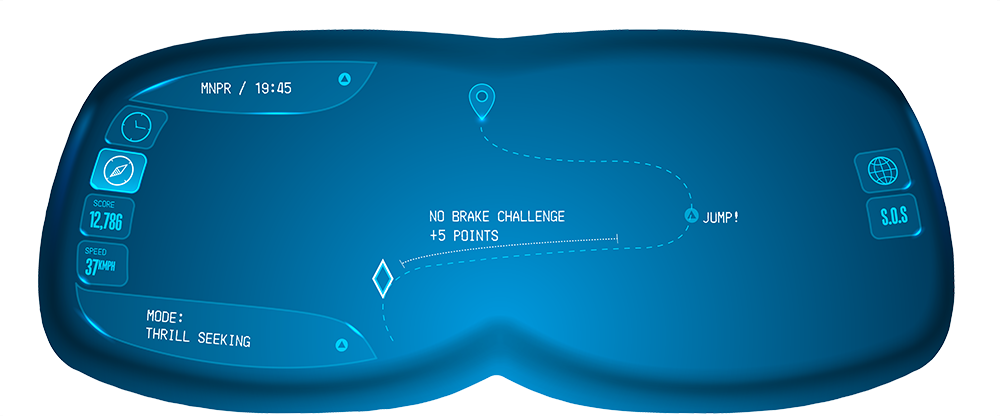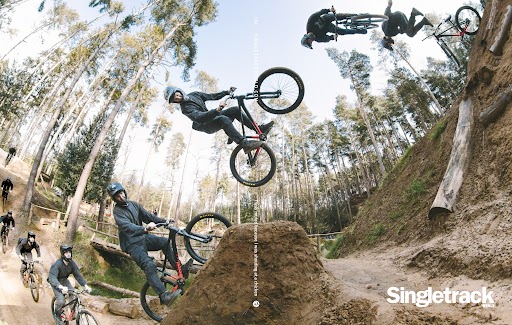Put down your calculators and pick up your pitchforks, because Benji has ideas about where you can stick your science…
Despite what this article is called, I am not anti-science. I do not wear a tinfoil beanie. I have all of the vaccinations. I like science. Science is progress. But I do have some reservations when it comes to science – or more accurately, ‘bike science’ – being introduced when it comes to evaluating mountain bikes. My issue with bike science can be broadly broken down into three separate concerns. Metrics, measurements and myths.

Fundamentally I don’t think the two main metrics for cycling are all that relevant to mountain biking. The two main metrics seemingly being speed and stiffness. Speed is nice and everything but it is not the main goal of why the vast majority of us do this thing called mountain biking. I just don’t think the fastest bike is inherently the best bike. And while no one really likes to pilot a bike that doesn’t go where it’s pointed, increasing the stiffness exponentially ad infinitum is not a very desirable outcome either.
Science disciples
No doubt some of you reading this will also be partial to a bit of road riding. I feel sorry for you. Not because you ride road bikes. That’s fine. Two wheels are always good. I feel sorry for you because of what has happened to road bicycles. I mean, road bikes have always been ridiculously solely focused on aping pro racing but the recent aero-is-everything is very much a warning to mountain bikers. Road bikes are now entirely based on getting the ride over with as quickly as possible, with zero thought for the more abstract (and fundamental) reasons why people cycle in the first place. Namely, how it makes you feel. Road riders no longer know if they’ve enjoyed the ride until their Strava completes the upload and tells them. I exaggerate. But not much.
Latest Singletrack Merch
Buying and wearing our sustainable merch is another great way to support Singletrack

First published in Singletrack Magazine Issue 156
You are reading this because you are a Full Member
Road cycling has scienced itself to death to the extent that someone had to invent gravel bikes to reintroduce the correct Why You Ride factors back into drop bar biking.
F-Words
In my opinion, the reason why most of us mountain bike can be boiled down to ‘fun’ and ‘feel’. And that’s just the start of it. There’s also the whole being out in nature aspect: forest and fell bathing. And the fluid mix of all the different types (1, 2 and 3) of fun.
On a personal note, I actually ride bikes to get away from ‘science’, facts, alternative facts, stats… I mountain bike to embrace something pre-science. Something instinctual and fundamental to being a human, er, being. Science is great for keeping you alive. Mountain biking actually makes you feel alive.
On reflection (which is itself a sort of Zen state that is often encountered on a bicycle), I think I possibly have less of an issue with science if it’s executed accurately and appropriately. There’s a whole load of erroneously applied science and science that simply isn’t relevant.
Irrelevant science
A good example of irrelevant science is when well-intentioned people try to transpose motor vehicle science onto mountain bikes. The practical physics just don’t add up when comparing cars – or even motorbikes – to bicycles. The relative weight differences of the key ingredients (the human and the machine) make the whole comparison moot. Not to mention the whole aspect of mountain biking being very much not-constant – the terrain, gradient and body position are all over the place, all of the time. You don’t operate a mountain bike similarly to a motor vehicle in any way whatsoever.
Remember the whole fork rake brouhaha from a few years ago? I think that was caused by someone passing around a Motorbike Handling 101 book. Not only is it nigh on impossible to feel the effect of one fork rake versus another slightly different one, but it’s just something you adapt to halfway into your bike ride. It doesn’t really matter.
Examples of erroneously applied science are frequently found when it comes to discussing mountain bike frame suspension. Anti-rise. Anti-squat. Pedal kickback. That sort of circle jerking.

Anti-rise. Anti-squat. Pedal kickback.
Anti-rise is about braking. It is basically a measure of how much the rear suspension extends or compresses when the brakes are applied. The theory states that anti-rise above 100% causes compression and values below cause extension.
Anti-squat is about pedalling. The science states that higher levels of anti-squat (circa 100%+) result in a rear suspension that is less easy to compress when pedalling. And yep, lower levels of anti-squat (significantly less than 100%) result in the opposite.
Pedal kickback is about the rear suspension compression’s effect on your cranks/pedals. The theory being that as rear suspension compresses, the rear wheel moves away from the bottom bracket (thus cranks/pedals) and the chain connecting these two points can’t stretch, so the cranks have to rotate backwards, resulting in ‘kickback’ felt through pedals.
Kicking back
For the record let it be shown that I think:
Anti-rise is a not significant factor on mountain bikes
Anti-squat is real but there is no Best Amount
Pedal kickback is not real
Pedal kickback is not real? Well, it’s not present on the vast majority of full-suspension bikes. As various people have pointed out in recent years – major kudos to Vorsprung Suspension and also Cass Labs – the tugging that people have been feeling in their feet is actually, simply, caused by the (actually untensioned) chain bouncing up and down above the chainstay.
I feel it may be apposite to hark back to Monty Python’s Holy Grail manic bit of circular thinking… their logical fallacy stated a witch was a witch because they burn – wood burns and wood floats, as do ducks, and if a witch weighs the same as a duck, she’s made of wood and wood burns…
Burn the egos, twiddle the knobs
The whole thing can sometimes also just smack of trying to make mountain biking more complicated than it really is. This may be due to frame designers’ megalomaniacal egos. Not content with having total ownership of a bike’s geometry and chassis feel, they couldn’t help themselves and started to extend their reach into suspension behaviour. Designing bikes that actuate the suspension in uncalled-for ways rather than just letting the suspension companies deal with it.
I’m joking. But only partially. There’s far too much ink and oxygen used up discussing the various whys and wherefores of all the different suspension designs. And far too little time spent on suspension set-up.
Why is this? Because suspension set-up is either boring or frightening to most people. And humans like gadgets. We love our Rube Goldberg machines. “This does this, which in turn does this and makes this do this.” Yes! Cool!
The reality is that the novelty soon wears off and you’re left with something that’s laborious to clean and expensive to maintain; something that actively starts to harsh your buzz rather than add to it.
School of life
I get the feeling that a great deal of mountain bike ‘science’ is missing a vital step in the process. Namely, actually doing real-world testing. A lot of this science seems to begin and end at the computer. All desk, no dirt. And important factors get missed out. For example, there’s no rider (a moving mass) in the scene, or the wheels aren’t rotating, or there’s no terrain gradient factored in.
Even if things do reach the real-world testing stage, I’m still not sure if the correct questions are being asked. And by ‘correct questions’ I mean questions that are actually relevant to riders like you and me. ‘Is it faster?’ is a red herring. The one and only question that needs to be asked is: ‘Does it feel better, or worse?’
Simplifying complexity
Mountain biking is very, very complicated but only in a relatively small number of ways. What ways? Frame geometry, component geometry and suspension. The thing is, although there are only three factors, each factor cascades/fractals into many more sub-factors. And they all interact with – and influence – each other.
Oh, and I’ve forgotten to include the human being on top, piloting the contraption. Not only do human beings vary from person to person, but they also vary within themselves from minute to minute, day to day, season to season.
In summary then, can science come up with some methodology for measuring the intangibles of why we mountain bike? Very probably. I’m sure there are some funky skull caps with wires sticking out of them that can measure endorphins or serotonin levels or some such. The thing is, would the act of wearing it – and knowing that you’re being measured – have an effect on the outcome? Almost certainly. Observation affects reality. Ignorance can lead to bliss.





